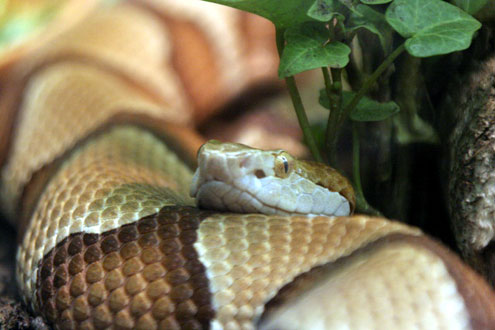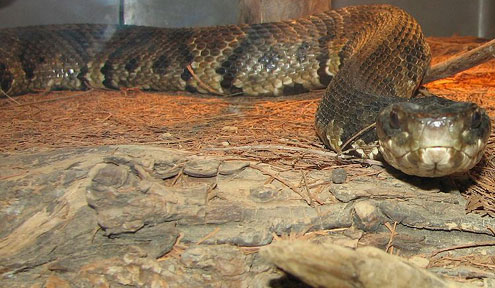STEPHENVILLE, TEXAS—With the abundance of moisture and mild weather North Texas has experienced this spring, area snakes are thriving and highly active.
The comfortable temperatures are also enabling the snakes to be more active during time periods where humans are also likely to be outside, which can result in confrontations between the two.
“We have seen glorious weather this month with no extreme temperatures,” said Dr. James Mueller, assistant professor in wildlife management at Tarleton State University. “This is allowing snakes to move about when people aren’t used to seeing them.”
Unfortunately, snake encounters trigger one of two reactions in humans—fear or the belief that the only good snake is a dead snake.

“Snakes are an important component of the environment,” Mueller said. “They eat a lot of rodents. The increased snake activity North Texas is seeing right now is probably an indication of a good rodent population.”
Because of snakes’ ability to help control rodent populations, Mueller recommends people let the snakes go about their business instead of killing the reptiles. The majority of snakes are non-aggressive and won’t strike unless provoked or stepped on.
“Most snakes are passive,” Mueller said. “The only ones that are aggressive are cottonmouths. They’ll go out of their way to strike.”

As the weather warms up, more people will be working or playing outdoors, which increases the likelihood of finding the beneficial reptiles. However, there are preventative measures available that can lesson the risk of an encounter.
“The number one thing people can do to deter snakes is to remove any debris that is lying around,” Mueller said. “Keep your lawn mowed and get rid of brush piles. Anywhere that attracts rodents, snakes will also be hanging around.”
Other natural snake deterrents are household pets such as cats and dogs. Just them milling about in the grass will decrease the hospitality level for snakes. Cats also have a natural tendency to investigate and play with anything that comes into their territory.
If you’re going to be working outdoors in areas prone to snakes, Mueller recommends wearing long pants, tall-topped boots and leggings, if possible.
“There are really only two reasons people get bit,” he said. “They either don’t see the snake or they decide to mess with it. To lessen the chances of being bit, watch what you’re doing, where you’re going and if you see a snake, go around it.”
However if bitten by a venemous snake, it’s important to seek immediate medical attention. Not all bites are life threatening, but the venom can cause extreme pain and other problems if not properly treated.
Of all bites in Texas, the most common are received from pit vipers—rattlesnakes, copperheads and cottonmouths. According to the Texas Department of State Health Services, less than 0.2 percent of bites result in death and roughly half of bites from venomous snakes are dry.
Mueller, who just finished a two-and-a-half year study on the Brazos Water Snake, found that 99.4 percent of snakes found on the Brazos River were non-venomous.
The study was done in part because the Brazos Water Snake’s population is in decline.
“We’re concerned about the Brazos Water Snake because something has changed,” Mueller said. “We’re not sure if it’s a population cycle or something else. Where we used to find one of these snakes for every hour of searching, we now find one every 24 hours.”
Fortunately, the snake was found in all areas of its normal range. But like many species, the Brazos Water Snake’s decreasing population could be the symptom of a bigger problem. Which is yet one more reason why humans should let snakes live when we come across them—their presence is a sign of a healthy, natural environment.